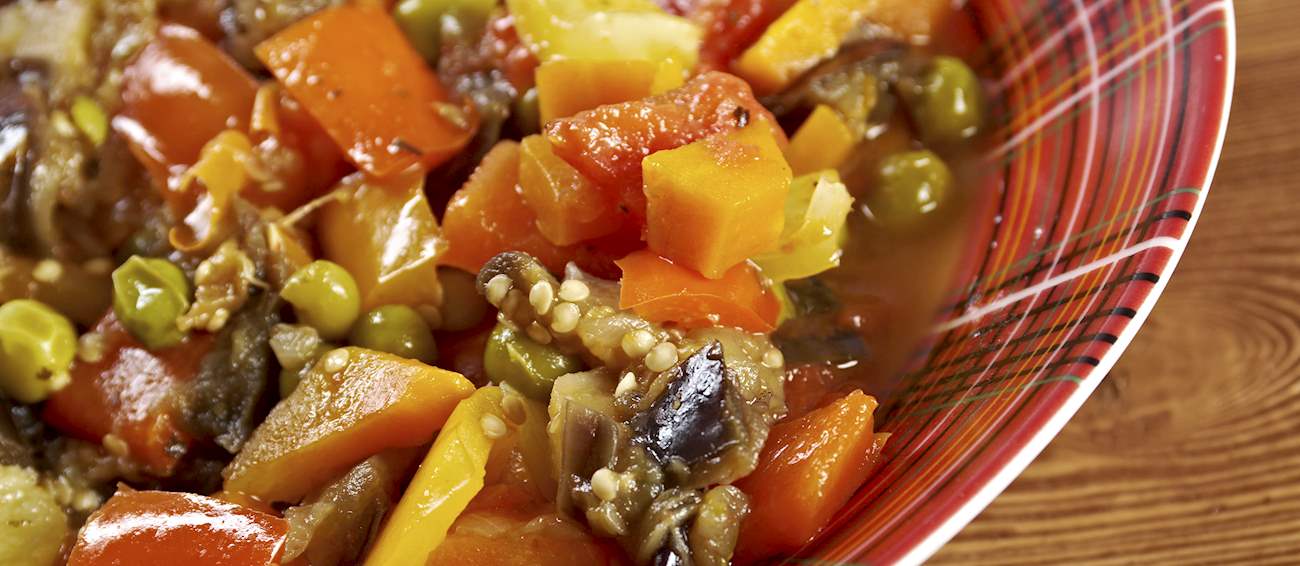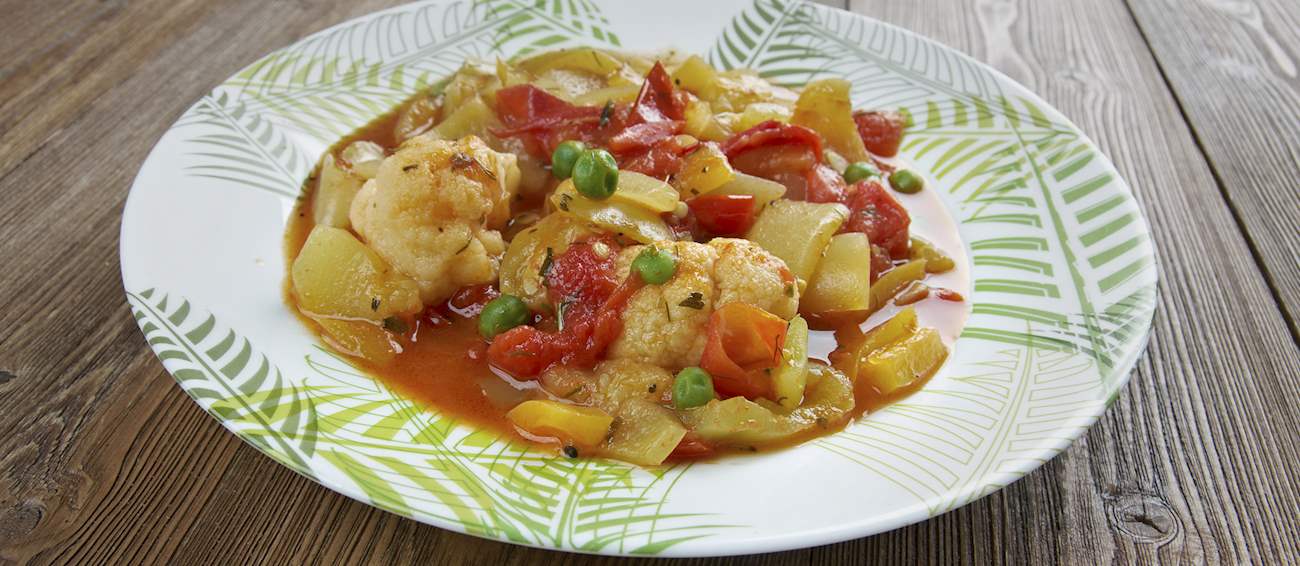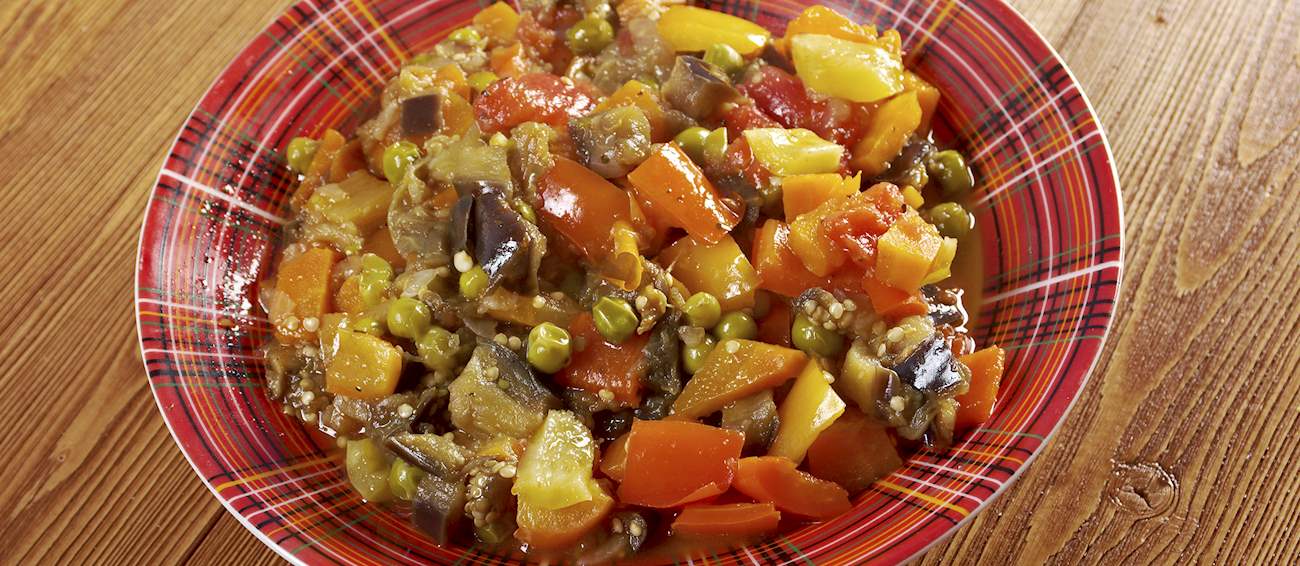Ghiveci
(Ghivetch, Ghuvetch, Romanian Vegetable Stew)
One of the most popular traditional Romanian dishes is a thick vegetable stew known as ghiveci. It is prepared throughout the year, but due to the availability of ingredients, it is usually divided into two seasonal variants: the hearty winter version, and the lighter, summer variety.
The winter version usually incorporates root vegetables such as carrots, celery, cauliflower, and cabbage, while the summer interpretation usually employs seasonal zucchini, eggplant, or bell peppers. Tomatoes or tomato sauce, garlic, and onions are mandatory ingredients, but the choice of other elements can vary and is easily adjusted to preference, availability, and convenience.
Traditionally, the vegetables are cut or sliced, shortly fried on the stove, and finished in the oven. Modern versions often omit baking and complete the entire dish on the cooking stove. Although it is similar to the Hungarian lecsó, French ratatouille, and Bulgarian gjuvec, it is believed that this Romanian version has been developed under the Turkish influence in the area, because the dish is named after a traditional Turkish earthenware pot.
Occasionally, ghivechi can be prepared with rice, but it is more commonly served on the side of this nourishing and healthy vegetable stew.
























